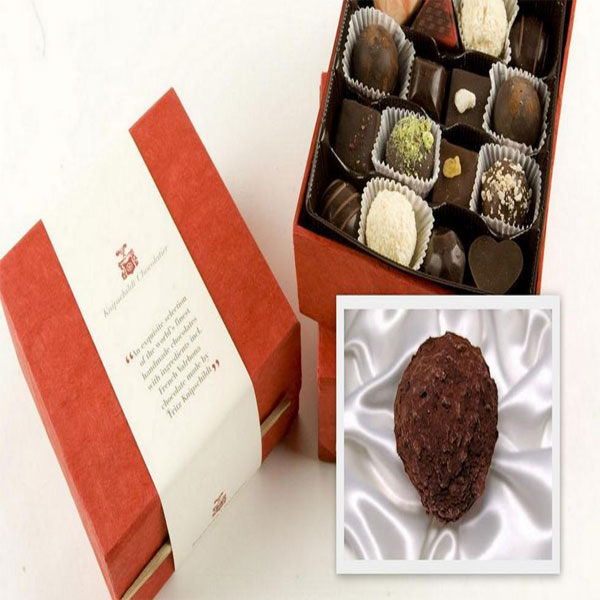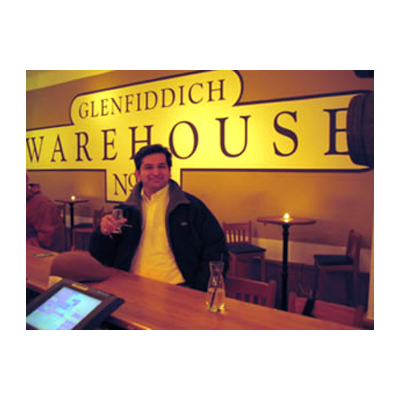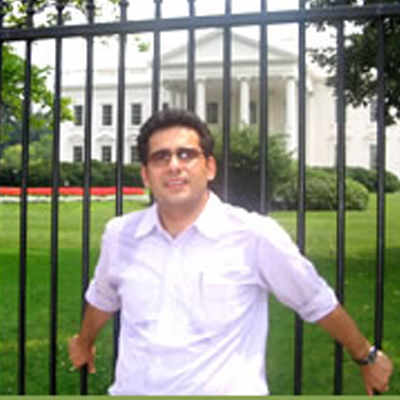What Money Can Buy
Money can?t buy you happiness but it can surely buy the means to keep you happy. And for those with an eclectic taste in lifestyle, happiness often means being able to indulge in their passions. From antique collections, luxury rides, limited editions ranges, to auctions that the world have their eyes on, Exec Lifestyle gives you a sneak peek into the uber lifestyle. This week, plan that Hollywood style date in a chopper, get yourself the ultimate style statement from Jimmy Choo, and try a new wearable tech?
Flying high

Remember how many of us sighed collective ?oohs? and ?aahs? when Christian Grey from Fifty Shades of Grey, brought Anastasia Steele to his penthouse in Seattle on Charlie Tango his personal helicopter? Now if that is your idea of an uber luxurious dream date then here?s some good news. Such a date is very much possible in heart of Mumbai.
MAB Aviation, a Mumbai based private aviation service has been catering luxurious joy rides around the city on their special private copters, starting at a price of Rs 35,000 for 30 minutes, according to a spokesperson from the organisation. Apart from escorting high profile diplomats and businessmen, they also get booked for lovebirds coveting a destination wedding.
Now the next time your dream date drives up your alley in a BMW, don?t be complacent. Think bigger and put him in touch with MAB Aviation!
?Em Stilettos just a booty call

The world of fashion just made a giant leap with stiletto specialist Jimmy Choo collaborating with the well-known boot maker Moon Boot. Fashionistas predict that the line that will come out of this collaboration will be quirky with a touch of class and practicality.
If you are someone with a thing for high heels then Jimmy Choo is a name you chant like a religious mantra. On the other hand, Italy?s Moon Boot is sports-style footwear created for comfort, and can withstand adverse climates. When you combine the two you get with the extremes of shoe fashion.
The collection, created in luxury materials such as shearling and fox fur, will feature eight limited edition pieces. Moreover, the line will sport a futuristic look while still retaining the retro vibe. Called Jimmy Choo. 08?, this brand new experimental line is to make its grand debut in October 2015 and the products will be available at Jimmy Choo boutiques and select stores across the globe. Although the makers have not revealed their starting price for the range, any fashion aficionado can tell that a pair of these limited edition Jimmy Choos would cost you a fortune.
Oh So Futuristic

Here?s another addition to family of wearable tech, which has indeed been growing by leaps and bounds over the last couple of years. After Google Glass, it's now BMW MINI?s turn to show the world how to connect a driver with his car in an innovative manner. With its new augmented features, the MINI is all set to change the future of commuting with a range of exceptional features.
With everyone going gaga over wearable technology like Google Glass and iWatch, we can't blame the British luxury automobile giant, BMW MINI, to have their own version of it. And for a car-maker what would be more relevant than smart eyewear? This specialised eyewear uses see-through technology and shows information to the driver regarding the drive, without taking away from the view of the road and other elements on the path. Sounds like a cool scene from those sci-fi movies right?
What?s more, MINI has further been working with various Qualcomm companies and has come up with an interlinked system that offers improved routing information, as well as guidance for the driver. Design wise this little machine reminds you of the classic MINI, as the prototype is created in a combination of carbon black and dull gold. The gadget debuted at the Auto Shanghai show earlier this year.
Power play

The world of hotel business is nothing short of powerplay between empires with the hotel properties being the castles. And this was reiterated when the destination chosen for the Hong Kong based Shangri La (rebranded to Palladium Hotel) will once again be replaced by Starwood Hotel & Resort?s luxury property St. Regis. Slated to make its debut in the third quarter of 2015, St. Regis will now be a part of Mumbai?s affluent five-star hotels catalogue.
Known for its impeccable hospitality and bespoke service across the globe, this 38-storey property will feature 386 guest rooms, including 60 suites with a wide range of gourmet selections at its four specialty restaurants, a club lounge and three bars. The hotel will also boast of its signature Iridium Spa offering bespoke touches of a rare spa experience. Besides these services, the hotel will house a well-equipped fitness centre, swimming pool and a 5,200 sq meters of unrivaled space for events and weddings.
In addition to the St. Regis Mumbai, the company is set to debut more hotels in India in the next two years including W Retreat & Spa Goa, The Westin Kolkata, Sheraton Hyderabad, Le Meridien Nagpur and the Aloft New Delhi Aerocity, reports luxpresso.com.
Through the lens

The extremely rare and antique Laica camera of the 0-series 1923 fetched a jaw dropping $1,900,000 at the 19th WestLicht camera auction held on 28 May, making it the most expensive in the world so far. It claimed the position after the breaking the record of Leica MP2 that fetched 402,000 pounds in 2010. This beautiful piece was estimated to go for sale between $350,000 and $450,000, however the opening bid of $200,00 made it clear that the estimates were way off the mark. The said camera is the seventh of the Leica 0-series, and only 25 were produced to test the market in 1923.
The camera is also the only camera known with Germany engraving on the top plate. If that weren?t enough to get curious about this rare model of Camera, then it?s winner bidder should. The auction was closed after a winning bid was placed by an anonymous private Asian collector, after 20 minutes of fierce bidding.












 I like to collect paintings from different painters, especially unique folk paintings. I am an impulsive collector. Since now the biggest constraint is space, purchasing has slowed down, and also all collectors items require good care. I travel extensively to the countries that are rich culturally. I like buying favourites from street painters & underground music from street musicians in countries like France.
I like to collect paintings from different painters, especially unique folk paintings. I am an impulsive collector. Since now the biggest constraint is space, purchasing has slowed down, and also all collectors items require good care. I travel extensively to the countries that are rich culturally. I like buying favourites from street painters & underground music from street musicians in countries like France. I like my collected stuff to have personality and am very choosy and fussy. I always have had a love for art. During one of my visits to Cannes I had a day to myself. Some locals told me about a small town called Antibes and the Picasso museum there. Since the museum was to open after a couple of hours I decided to walk around this picturesque town. I came across an antique shop run by an old British gentleman. He had an amazing collection of antique maps and lithographs from the 18th century. These lithographs had an amazing amount of detail and were painstakingly hand painted using delicate water colors. The 4" x 6" artworks were stunning. I picked a couple and then the gentlemen gifted me one beautiful rendition of Hotel de Ville - Paris.
I like my collected stuff to have personality and am very choosy and fussy. I always have had a love for art. During one of my visits to Cannes I had a day to myself. Some locals told me about a small town called Antibes and the Picasso museum there. Since the museum was to open after a couple of hours I decided to walk around this picturesque town. I came across an antique shop run by an old British gentleman. He had an amazing collection of antique maps and lithographs from the 18th century. These lithographs had an amazing amount of detail and were painstakingly hand painted using delicate water colors. The 4" x 6" artworks were stunning. I picked a couple and then the gentlemen gifted me one beautiful rendition of Hotel de Ville - Paris. 

 I do not like being driven around. The wheel has to be in my hand for me to enjoy the drive to the hilt. Germany and France have been his favourite destinations and I have traversed most parts by road with like minded friends.
I do not like being driven around. The wheel has to be in my hand for me to enjoy the drive to the hilt. Germany and France have been his favourite destinations and I have traversed most parts by road with like minded friends. d wild carnival celebrations) are all wonderful cities to explore.
d wild carnival celebrations) are all wonderful cities to explore. All these cities have an atmosphere that is reverberating with historical importance. But I am not a museum kind of person, I prefer soaking in the real life visible around today.
All these cities have an atmosphere that is reverberating with historical importance. But I am not a museum kind of person, I prefer soaking in the real life visible around today. Driving along the German Alpine Road is an amazing experience. It is an exhilarating route full of twists and turns. The 450 kilometre-long route is stunning and offers great variety - Alpine meadows, hills, mountain peaks, green forests, valleys and lakes follow one another in a steady rhythm. The other exhilarating speed-thrill is driving from Stuttgart to Zurich. I did it in less than two hours, after a 14-hour flight. For anyone planning this adventure, I offer no guarantees.
Driving along the German Alpine Road is an amazing experience. It is an exhilarating route full of twists and turns. The 450 kilometre-long route is stunning and offers great variety - Alpine meadows, hills, mountain peaks, green forests, valleys and lakes follow one another in a steady rhythm. The other exhilarating speed-thrill is driving from Stuttgart to Zurich. I did it in less than two hours, after a 14-hour flight. For anyone planning this adventure, I offer no guarantees. lake side properties and have had the good fortune of staying at some of the most exclusive lakeside properties in India and abroad. Germany's lakes are as diverse as the countryside which surrounds them. Some are very well known; others are hidden gems that only reward people who take the trouble to seek them out. They offer fresh air and fantastic natural scenery - and the waters that are crystal clear.
lake side properties and have had the good fortune of staying at some of the most exclusive lakeside properties in India and abroad. Germany's lakes are as diverse as the countryside which surrounds them. Some are very well known; others are hidden gems that only reward people who take the trouble to seek them out. They offer fresh air and fantastic natural scenery - and the waters that are crystal clear. among the baroque Parisian architecture with the language lilting in the air around you.
among the baroque Parisian architecture with the language lilting in the air around you. paradise.
paradise.




